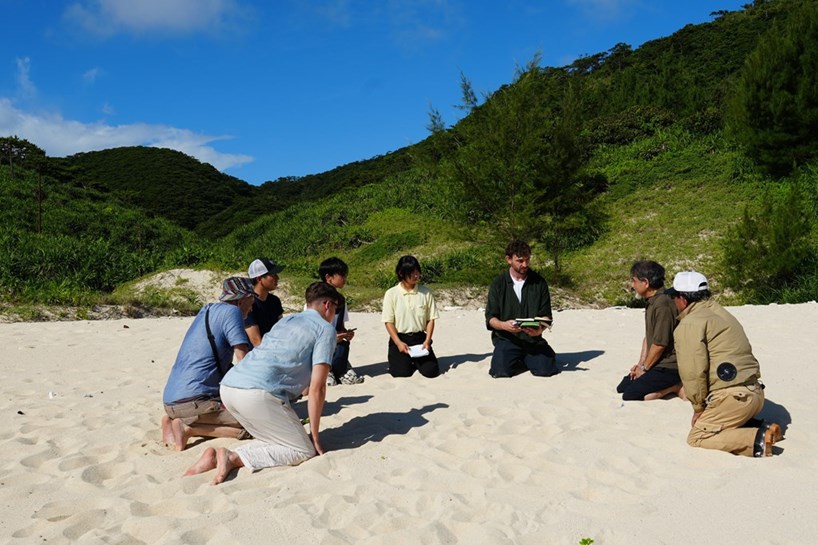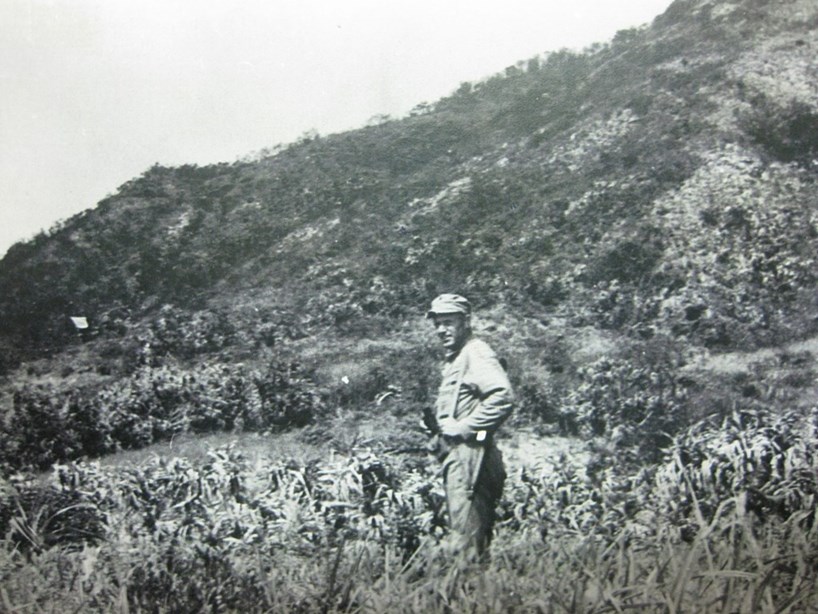THE US Marine Corps Reservist Lt. Joseph Hopkins never spoke to his son, Michael, about the extraordinary events that took place on the Japanese island of Aka in June 1945. It was only when searching the internet after the death of his father — a devout Christian — that Michael came across a narrative that his father had recorded for a TV station. “I was gobsmacked that my father was trying to bring an end to the slaughter,” he said.
Lt. Hopkins was one of the architects of a truce between US and Japanese soldiers in the final throes of the Second World War — a story so remarkable as to be scarcely believable. Enemy combatants stopped fighting to negotiate a truce, swap photos of their sweethearts, share lunch, and even pray together. Eighty years on, this unlikely truce has important lessons for the Church in a world that remains afflicted by warfare.
The events that Lt. Hopkins referred to took place in late June 1945, in the closing days of the ten-week Battle of Okinawa. This battle is not well-known in Britain, even though the British Pacific Fleet assembled to supported the US landings was the Royal Navy’s most formidable strike force of the entire Second World War. But, for Okinawans, the collective trauma resonates down the generations.
Operation Iceberg — the Allies’ code name for the plan to seize Okinawa Island — saw the island as a launch pad for the invasion of mainland Japan. The Japanese were determined to slow this: as Admiral Ito, who perished in the battle, put it, at Okinawa “we can best break the enemy’s leg. . . He cannot continue his hop, skip, and jump operations” all the way to Tokyo.
 Nick MegoranPrayer on Utaha beach, Aka Island, June 2025
Nick MegoranPrayer on Utaha beach, Aka Island, June 2025
The entrenched Japanese made the Americans fight yard by yard, so that they lost 12,500 men. In what Okinawans called “the typhoon of steel”, the Americans fired a staggering weight of munitions — including 7.5 million howitzer shells and 60,000 eight-inch naval shells — at the Japanese positions. Some 95,000 Japanese combatants and an even greater number of Okinawan civilians were killed before US forces eventually overcame the defenders.
Commanded by their senior officers not to surrender, Japanese soldiers not only fought to the death, but compelled Okinawan civilians in their family groups to take their own lives so as not to fall into the Americans’ hands.
In the midst of this unspeakable bloodshed, in June 1945, a small group of US volunteer officers, led by Marine Lt. Col. George Clark, landed on Aka Island, 15 miles off Okinawa, to attempt to negotiate a bloodless capitulation of the defending garrison.
They first cruised around Aka, and Japanese prisoners of war broadcast appeals for negotiations. Their humane treatment by the Americans had convinced the Japanese PoWs of the foolishness of the Japanese military code of suicidal resistance in an unwinnable war. They persuaded the Japanese garrison’s commander, Major Yoshihiko Noda, to meet the Americans.
Despite warnings that Noda was planning an ambush, Clark and a handful of his men took the considerable risk of landing on the remote Utaha beach in Aka. Negotiations lasted two days. During this time, Japanese and American soldiers parleyed, exchanged photographs of their families, and ate lunch together on the beach. In his official report, Clark described fraternisation between Japanese and American soldiers: “officers as well as enlisted men, white folks, black folks, yellow folks; a general melee if there was ever one.” It was, he wrote, “the most amazing spectacle it has ever been my lot to behold”.
The Japanese concluded that, regrettably, they were unable to surrender, but they agreed a truce that held until the end of the war. In a poignant final act before the two sides parted, Clark invited the Japanese to join the US troops “in a prayer to the Supreme Being of all faiths for international understanding and peace”. The Japanese agreed, and the two sides knelt together on the beach as the American chaplain led prayers.
This is the only known encounter of its kind in the Asia-Pacific War. What lessons does it hold for us today?
First, it is a striking demonstration that something has gone seriously wrong with the world. The truce arrests us precisely because we know that it took place amid mass killing and destruction. Struggling to find words to describe the horror of the battle, survivors often turn to concepts of hell. Okinawan civilian memoirs use images of hell from Buddhist cosmologies, and a US veteran reflected that “on Okinawa the marines and soldiers were going through their crucible of hell.” Okinawa is a vivid demonstration of the biblical doctrine of the Fall. As Christians, we are called to recognise and lament what Wilfred Owen termed, in another context, this “carnage incomparable and human squander”.
Second, it tells us that, none the less, even war cannot obscure our ineradicable sense that human life is a gift of God, that we are created imago Dei, in his image. Despite military propaganda on both sides, enemies were able to recognise each other’s humanity by talking, joining together in prayer. breaking bread, and choosing not to kill.
 Used by permission of Mrs Trudy Johnson, daughter of Col. ClarkCol. Clark standing on Utaha beach. The Japanese delegation’s white flag of truce is just visible
Used by permission of Mrs Trudy Johnson, daughter of Col. ClarkCol. Clark standing on Utaha beach. The Japanese delegation’s white flag of truce is just visible
Third, the truce reminds us of the hope at the heart of the Christian faith. Because in Christ God entered our world, war and death will not be the final words in human history, and we can act now to make peace in the light of that certain future. According to Lt. Clark’s son, James, his father’s Christian conviction was crucial in explaining why he risked so much to pursue this unlikely truce. “He was driven by faith,” James said of his father, who served for many years after the war as an Elder of his Presbyterian church. “He was a peacemaker.”
Finally, the truce shows us that to be peacemakers demands toughness, courage, and creativity. Clark had a garrison at his disposal, and could easily have called in air strikes and naval bombardment. Instead, by landing on Aka and hoping that the Japanese would not spring a trap, Clark put himself and his men at considerable risk. In the Battle of Okinawa, there were undoubtedly many instances of the bravery of warriors on both sides, but it takes a particular type of courage to attempt what Clark, Hopkins, and the other marines did on Aka island. It is no wonder that Christ said: “Blessed are the peacemakers.”
Precisely 80 years to the day, on 26 June, I was part of an Anglo-Japanese research group who travelled to Utaha beach to remember this virtually unknown truce. Pete Alston, a staff member at Jesmond Parish Church, Newcastle, led prayers in English and Japanese: “Help us, O Lord, to find peace with you,” and then, “Help us to work for peace with others.” Giving thanks for the US and Japanese men who “showed us that there is a better way than war”, he concluded by asking for help “to follow their example”.
To mark the 80th anniversary, Michael Hopkins also travelled to Aka and knelt at the spot where his father had helped to negotiate the truce. Reflecting on the wars that rage today, he prayed: “Lord, put an end to this madness.” As we mark VJ Day in a world that remains rife with war, may that also be our prayer — and our call to action.














